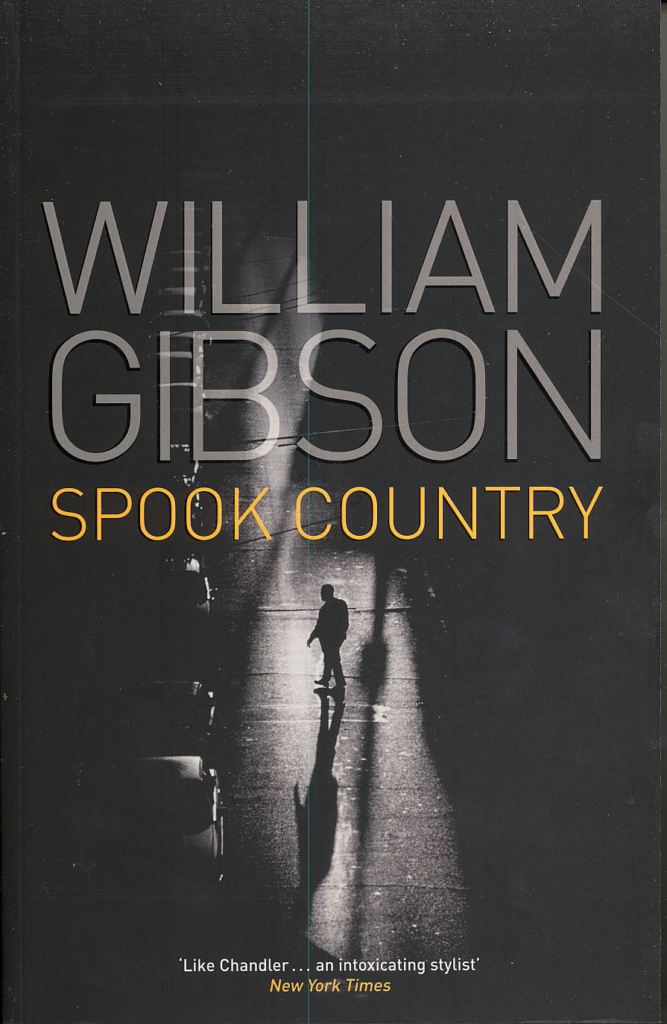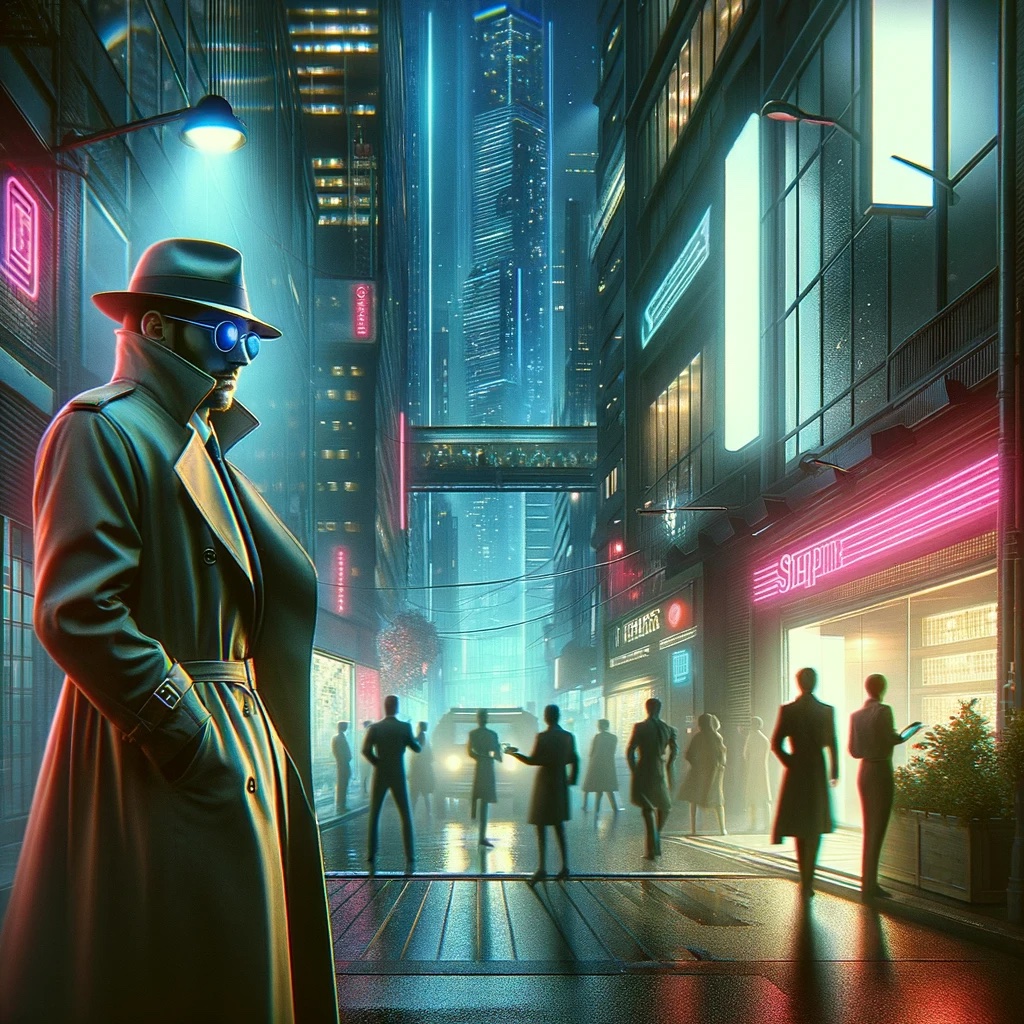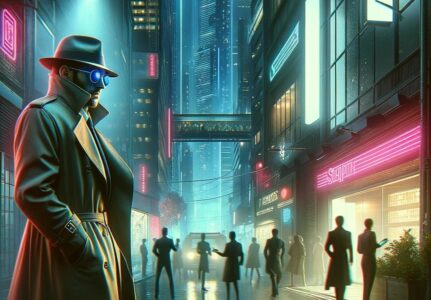In the realm of contemporary literature, few authors can rival the enigmatic and visionary storytelling of William Gibson. “Spook Country” (2007) stands as a testament to Gibson’s narrative prowess, offering readers a mesmerizing journey through a world where technology and espionage intertwine. In this article, we embark on an in-depth exploration of “Spook Country,” dissecting its intricate plot, introducing key characters, unraveling its thought-provoking themes, uncovering its sources of inspiration, examining critical reviews, assessing its cultural impact, and recommending similar reads from the illustrious author’s repertoire.
1. Plot: A Tapestry of Espionage and Technology
“Spook Country” weaves a complex tapestry of espionage, technology, and the intricate dance between the two. Set in the post-9/11 world, the novel introduces us to Hollis Henry, a former rock singer turned journalist, who finds herself immersed in a world of covert operations, high-tech intrigue, and mysterious cargo.
The narrative unfolds across multiple perspectives, offering readers a multifaceted view of the story. We follow Hollis as she delves into a story about a new form of art known as “locative art” and its mysterious creator, Bobby Chombo. Meanwhile, Tito, a young Cuban-Chinese operative, is tasked with tracking a shipment of highly valuable cargo. These seemingly disparate threads gradually converge, creating a web of intrigue that keeps readers on the edge of their seats.
Gibson’s narrative genius shines through as he explores themes of surveillance, the blurring lines between reality and virtuality, and the power dynamics of a world in flux.
2. Key Characters: A Diverse Ensemble
“Spook Country” introduces readers to a diverse ensemble of characters, each with their own unique quirks and motivations.
- Hollis Henry: A former rock star turned journalist, Hollis is our window into the world of “locative art” and its enigmatic creator. Her tenacity and curiosity drive much of the novel’s investigation.
- Tito: A young Cuban-Chinese operative, Tito’s journey takes him on a perilous mission to track a mysterious cargo. His resourcefulness and street smarts make him a standout character.
- Bobby Chombo: The elusive artist behind “locative art,” Bobby Chombo’s enigmatic persona adds an air of mystery to the story. His creations blur the lines between art and technology.
- Milgrim: A former drug addict with an uncanny ability to decipher encrypted information, Milgrim’s role in the narrative is both intriguing and central to the plot.
Gibson’s knack for creating complex and compelling characters is on full display, making “Spook Country” a character-driven narrative that resonates with readers.

3. Key Themes: Navigating a Complex Terrain
“Spook Country” explores a myriad of thought-provoking themes, inviting readers to contemplate the implications of the modern world.
- Surveillance Society: The novel delves deep into the idea of a surveillance society, where privacy is a scarce commodity. It forces readers to confront the consequences of living in a world where every move is tracked.
- Virtual Reality and Augmented Reality: Gibson’s fascination with the virtual world is evident in “Spook Country.” The concept of “locative art” blurs the lines between physical and digital, inviting readers to question the nature of reality itself.
- Globalization and Cultural Fusion: The novel reflects the globalized nature of our world, with characters from diverse backgrounds and a plot that spans continents. It highlights the interconnectivity of cultures and the collision of traditions.
- Post-9/11 Anxiety: Set in the aftermath of the 9/11 attacks, the novel captures the pervasive sense of anxiety and uncertainty that characterized the era. It explores the consequences of living in a world reshaped by terrorism.
4. What Inspired the Book: Gibson’s Visionary Impetus
To truly appreciate “Spook Country,” it’s essential to understand the inspiration behind Gibson’s work. The author has always been at the forefront of science fiction, often predicting technological advancements and societal shifts with uncanny accuracy.
Gibson’s fascination with technology, the internet, and the evolution of human interaction has been a driving force in his writing. In “Spook Country,” he continues to explore the evolving relationship between humanity and technology, offering a glimpse into a future that is both fascinating and unsettling.
Additionally, Gibson’s own experiences as a traveler and observer of global cultures inform the novel’s richly detailed settings and characters. His ability to blend the familiar with the speculative creates a unique and immersive reading experience.
5. Reviews and Cultural Impact: Acclaim and Influence
“Spook Country” received widespread critical acclaim upon its release, solidifying William Gibson’s reputation as a literary visionary. The novel’s blend of high-tech intrigue, espionage, and social commentary resonated with both readers and critics.
The New York Times praised Gibson’s ability to “peer into the near future with uncanny precision” and noted that the novel was “a compelling and visionary work that challenges our perceptions of reality.”
The Guardian lauded the book as a “masterclass in contemporary science fiction,” highlighting its relevance in an era defined by technological advancements and global uncertainty.
The cultural impact of “Spook Country” is undeniable. It sparked discussions about privacy, surveillance, and the role of technology in our lives. Its exploration of the virtual world and locative art influenced subsequent works of science fiction and art. Gibson’s ability to anticipate and comment on societal trends has cemented his status as a literary luminary.
6. Similar Books: Exploring the Gibson Universe
If “Spook Country” has piqued your interest, you’ll undoubtedly find other works by William Gibson equally enthralling. Here are a few recommendations:
- Neuromancer (1984): Considered a seminal work in the cyberpunk genre, “Neuromancer” is a must-read for fans of Gibson. It introduces readers to the iconic character Case and the virtual realm of the Matrix.
- Pattern Recognition (2003): This novel shares thematic elements with “Spook Country” and explores the world of advertising, branding, and the influence of the internet on culture.
- The Peripheral (2014): Gibson’s exploration of the concept of multiple timelines and the impact of technology on different eras makes “The Peripheral” a captivating read.
- Zero History (2010): The final installment in the Blue Ant trilogy, “Zero History” continues to delve into the world of high-stakes corporate intrigue and technological subversion.
7. Other Books by the Same Author: A Literary Odyssey
William Gibson’s literary journey spans decades, and his bibliography is a treasure trove of visionary storytelling. Here are some of his other notable works:
- Burning Chrome (1986): A collection of short stories that includes the titular story “Burning Chrome,” a precursor to the cyberpunk genre.
- Count Zero (1986): The second novel in the Sprawl Trilogy, this book further explores the interconnected worlds of cyberspace and corporate power.
- Idoru (1996): A novel that delves into the realm of celebrity culture and the virtual idol known as Rei Toei.
- All Tomorrow’s Parties (1999): The concluding book in the Bridge Trilogy, offering a blend of cyberpunk and post-cyberpunk themes.
- The Difference Engine (1990, co-authored with Bruce Sterling): A steampunk classic that imagines an alternate history where Charles Babbage’s Analytical Engine was successfully built.
Spook Country
In conclusion, “Spook Country” (2007) is a literary masterpiece that exemplifies William Gibson’s unparalleled talent for weaving intricate narratives, creating complex characters, and exploring themes that are as relevant today as when the book was first published. It’s a thought-provoking journey through a world where technology, surveillance, and espionage converge, leaving readers both captivated and introspective. As you delve into the pages of “Spook Country,” you’ll not only be entertained but also challenged to reconsider the boundaries of our technologically driven reality.
For more literary adventures, be sure to explore the vast landscape of William Gibson’s other works, where his visionary storytelling continues to push the boundaries of science fiction and challenge our perceptions of the future. Whether you’re a longtime fan or a newcomer to Gibson’s world, there’s always something new and intriguing waiting to be discovered in the pages of his novels.
So, are you ready to embark on a journey through the intriguing landscapes of “Spook Country” and beyond? Dive into the world of William Gibson and experience the future, today.
- William Gibson’s Official Website – This is the official website of William Gibson, where readers can find information about the author, his works, and any upcoming releases or events.
- Purchase “Spook Country” on Amazon – This link allows readers to conveniently purchase a copy of “Spook Country” if they are interested in reading the book after learning more about it in the article.
- Explore More Books by William Gibson on Goodreads – Goodreads is a popular platform for book lovers, and this link provides a list of William Gibson’s books, including user reviews and ratings, making it a useful resource for those looking to explore his literary works further.


